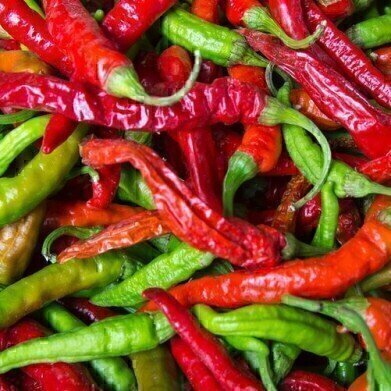Liquid chromatography
How Does the Scoville Scale Work for Spicy Peppers?
Mar 29 2021
Lamb Vindaloo, Phaal Curry or Chilate de pollo. The quest for the spiciest and hottest food on Earth is never-ending. Chefs and home cooks are constantly on the search for the hottest and spiciest foods. But they all have one thing in common, they are made from peppers or chili peppers that contain the magic ingredient capsaicin.
It is capsaicin that makes your tongue tingle, body sweat, and ears burn as you savour (?) your favourite curry, daal or spicy tom yum soup. The measure of a hot chili pepper is having a Scoville score that is through the roof – the higher the better. But how do you measure hotness and how has liquid chromatography improved the rating of the hottest chili peppers.
Wilbur Scoville’s organoleptic test
Wilbur Scoville (1865-1942) was an American pharmacist who was born in Bridgeport, Connecticut. He devised the Scoville Organoleptic Test in 1912 whilst working for the Parke-Davis pharmaceutical company. He was working on research to develop a method to measure the pungency, spiciness, or heat of chili peppers. This became the Scoville scale, a measurement of heat or spiciness and measured in Scoville Heat Units (SHU).
In the test, an exact weight of dried pepper is dissolved in alcohol to extract the heat components or capsaicinoids. This is then diluted in a solution of water and sugar. The solution is then tested by an expert panel of five testers to determine if they can detect any heat. The concentration of the solution is repeated diluted until at least three testers cannot detect any heat from the solution. The SHU given to the sample is based on the dilution.
Chromatography tackles the chili
One of the problems with the Scoville Organoleptic Test is that it is necessarily subjective. It depends on the ability of the human taste and olfactory system. The number of mouth heat receptors and each taster’s palate will also differ. Sensory fatigue can also play a role in a tester’s ability to taste ever weaker concentrations of capsaicinoids as they can become desensitized.
Nowadays, the heat of a chili is determined using high performance liquid chromatography. The use of HPLC is discussed in the article, Considerations for Sample Injection in High-Throughput Liquid Chromatography. HPLC measures the concentration of total capsaicinoids in a sample. The results of capsaicin capacity are converted to SHU by multiplying the parts-per-million value by 16. The highest naturally occurring capsaicin is in the Carolina Reaper – the hottest pepper in the world. But researchers have made hotter peppers in the lab. The Caroline Reaper has a value of 2.2 million SHU, a Jalapeno for comparison has a value of 2500-8000 SHU.
Events
May 11 2025 Vienna, Austria
May 18 2025 Tempe. AZ, USA
May 21 2025 Birmingham, UK
Jun 01 2025 Baltimore, MD, USA
Jun 15 2025 Bruges, Belgium














